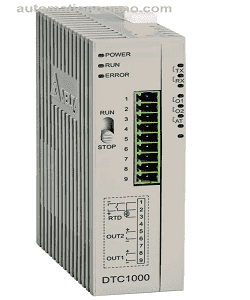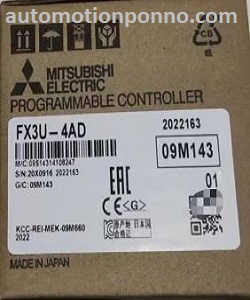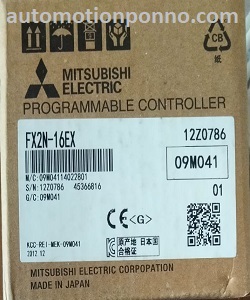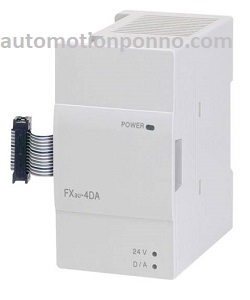

Delta DTC1000R & Delta DTC2000
Description
The Delta DTC1000R & delta DTC2000 is a temperature controller from Delta Electronics, designed for precise temperature regulation in various industrial applications. It is part of Delta’s DTC series, which includes digital temperature controllers known for their accuracy, reliability, and ease of use. Below is a comprehensive overview of the DTC1000 temperature controller, including its features, specifications, applications, and usage.
DTC1000 is an OPEN-TYPE PROCESS CONTROL EQUIPMENT and DTC2000 is an OPEN-TYPE PROCESS CONTROL ACCESSORY. These devices are microprocessor-based temperature control controllers that can be provided with normally closed and/or open contacts.
Temperature can be controlled separately by two group outputs: cooling (forward) or heating (reverse). When dual loop output control is used, the two output controls will be designed for cooling (forward) or heating (reverse). If two control outputs are conducted in the same direction, only the 1st group control period is valid. Control methods: PID control, ON/OFF control, manual control and PID program control. For details go to the DTC1000 & DTC2000
Details description of Delta DTC1000R & delta DTC2000
Model: Delta DTC1000R & Delta DTC2000
Type: Digital Temperature Controller
Series: Delta DTC series
Key Features Delta DTC1000R & Delta DTC2000
Accurate Temperature Control:
- Provides precise temperature regulation with a high degree of accuracy.
- Supports various input types for different temperature sensors, such as thermocouples and RTDs.
Dual Output:
- Capable of controlling heating and cooling outputs simultaneously.
- Supports relay, voltage pulse, and current output options.
User-Friendly Interface:
- Features an easy-to-read LED display for real-time monitoring and parameter setting.
- Simple configuration and parameter adjustment through front panel buttons.
PID Control:
- Advanced PID (Proportional-Integral-Derivative) control algorithm for stable and accurate temperature control.
- Reduces overshoot and improves response time.
Alarm Functions:
- Includes multiple alarm modes for over-temperature, under-temperature, and system faults.
- Provides visual and audible alerts to ensure safe operation.
Flexible Input Options:
- Supports a wide range of temperature sensors, including thermocouples (K, J, T, E, N, R, S) and RTDs (PT100, PT1000).
- Offers flexibility in sensor choice depending on application requirements.
Compact Design:
- Small footprint for easy installation in space-constrained environments.
- Suitable for DIN rail or panel mounting.
Communication Capabilities:
- Some models support RS485 communication for integration with other control systems.
- Compatible with Modbus protocol for seamless connectivity.
Technical Specifications
Input Types:
- Thermocouples: K, J, T, E, N, R, S
- RTDs: PT100, PT1000
Measurement Range:
- Varies by sensor type; typically covers a wide range suitable for industrial applications.
- For example, -200°C to 1370°C for thermocouple K.
Control Output:
- Relay output: SPDT, rated for AC250V 3A or DC30V 3A.
- Voltage pulse: 0-12V DC, 40mA max.
- Current: 4-20mA or 0-20mA, depending on model.
Accuracy:
- Typically, ±0.5% of full scale or better, depending on input type and measurement range.
Display:
- 4-digit LED display for setpoint and process value.
- Display resolution typically 0.1°C or 1°C depending on the range.
Power Supply:
- Universal power supply: 85-264V AC, 50/60Hz.
- Some models may support 24V DC.
Operating Temperature:
- Typically, 0 to 50°C.
- Storage Temperature:
- -20 to 70°C.
Dimensions:
- Compact size, typically around 48mm x 48mm x 110mm (WxHxD).
Weight:
- Lightweight for easy handling and installation, approximately 200g.
- Applications
Industrial Heating:
- Ideal for controlling heaters, ovens, and furnaces.
- Ensures precise temperature regulation for processes like annealing, baking, and curing.
Cooling Systems:
- Used in refrigeration and cooling applications to maintain optimal temperatures.
- Suitable for climate control in industrial processes.
Food and Beverage:
- Maintains precise temperature control in cooking, fermentation, and pasteurization processes.
- Ensures product quality and consistency.
Plastic and Rubber:
- Controls temperature in molding and extrusion processes.
- Helps in maintaining consistent material properties and quality.
HVAC Systems:
- Regulates temperature in heating, ventilation, and air conditioning systems.
- Enhances energy efficiency and comfort.
Chemical Processing:
- Controls temperature in reactors, distillation columns, and other process equipment.
- Critical for maintaining chemical reactions at desired conditions.
- Installation and Setup
Mounting:
- Can be mounted on a DIN rail or in a control panel cutout.
- Ensure proper ventilation to prevent overheating.
Wiring:
- Connect power supply, sensor inputs, and control outputs according to the wiring diagram.
- Use appropriately rated wires and connectors for safety and reliability.
Configuration:
- Set up parameters such as sensor type, control mode, and setpoints using the front panel buttons.
- Refer to the user manual for detailed setup instructions.
Calibration:
- Perform calibration to ensure accurate temperature readings.
- Use a known temperature source or reference sensor for calibration.
- Operation
Monitoring:
- Use the LED display to monitor real-time temperature and set points.
- Adjust parameters as needed to optimize control performance.
Control Modes:
- Select appropriate control mode (PID, ON/OFF, manual) based on application requirements.
- Fine-tune PID parameters for optimal response and stability.
Alarms and Alerts:
- Set up alarms for over-temperature, under-temperature, and system faults.
- Monitor and respond to alarms to prevent system issues and ensure safety.
- Maintenance and Troubleshooting
Regular Inspections:
- Periodically check connections and wiring for signs of wear or damage.
- Ensure the sensor and controller are clean and free from debris.
Diagnostics:
- Use the LED indicators and error codes to diagnose issues.
- Refer to the user manual for troubleshooting tips and solutions.
| MODEL NAME EXPLANATION | |
| DTC Series | DTC: Delta C series Temperature Controller |
| Controller Position | 1: first controller |
| 2: controller in parallel | |
| Auxiliary Output Groups | 0: standard, 2 groups output, no auxiliary output |
| 1: 1 group auxiliary output. Not available now. | |
| 2: 2 groups auxiliary output. Not available now. | |
| Optional | 00: standard |
| 01: CT input. Not available now. | |
| 02: Event input. Not available now. | |
| Main Output Type | R: Relay output SPST, 250VAC, 3A |
| V: Voltage Pulse output 12V +10﹪~-20﹪ | |
| C: Current output 4~20mA | |
| L: Linear Voltage output 0~10V | |
Specification of DTC1000 & DTC2000
| Power Supply | DC24V. Isolated switching power |
| Voltage Range | Rated voltage: 90%~110% |
| Power consumption | Rated 24 Vdc, Max. 24 W combined, 3 W + 3 W x no. of DTC-2000 (max. 7 connected) |
| Thermocouple: K, J, T, E, N, R, S, B, L, U, TXK | |
| Sensor Type | Platinum RTD: Pt100, JPt100 |
| Linear DC input: 0~5V,0~10V, 0~ 20 m A,4~20 m A, 0~50mV | |
| Sampling Rate | Analog input: 0.15 sec. Thermocouple or Platinum RTD: 0.4 sec. |
| Control Method | PID , PID program control, Manual or ON/OFF |
| Relay output (SPST), Max. load 250VAC, 3A resistive load | |
| Output Type | Voltage pulse output: DC 12V, Max. output current 40mA |
| Current output: DC 4 ~ 20m A output (Load resistance: Max. 500W) | |
| Analog voltage output: 0~10V (Load resistance shall be higher than 1000W) | |
| Output Function | Control output, Alarm output, or Retransmission output (only for linear voltage and current output as 1st group) |
| Alarm Function | 12 Alarm mode selections |
| Communication | RS-485 digital communication, 2400bps~38400bps. |
| Communication Protocol | Mod-bus communication protocol, support RTU/ASCII. |
| Internal | Provide internal connection terminals to transmit 24V power supply and |
| Connection | communication signal. |
| Vibration Resistance | 10 to 55Hz, 10m/s2 for 10min, each in X, Y and Z directions |
| Shock | Max. 300m/ s2, 3 times in each 3 axes, 6 directions |
| Resistance | |
| Ambient Temperature | 0 oC to +50 oC |
| Storage | -20 oC to +65 oC |
| Temperature | |
| Altitude | 2000m or less |
| Relative Humidity | 35% to 85% RH (non-condensing) |
| Pollution Degree | Degree 2 |
| Input Selection for DTC series: | ||
| Input Sensor Type | Register Value | Available Range |
| 0~50mV Linear Voltage Input | 17 | 0~50mV |
| 4~20mA Linear Current Input | 16 | 4~20mA |
| 0~20mA Linear Current Input | 15 | 0~20mA |
| 0~10V Linear Voltage Input | 14 | 0~10V |
| 0~5V Linear Voltage Input | 13 | 0~5V |
| Platinum RTD (Pt100) | 12 | -200 ~ 600oC (-328~1112oF) |
| Platinum RTD (JPt100) | 11 | -20~ 400 oC (-4~752 oF) |
| Thermocouple TXK type | 10 | -200~800 oC (-328~1472oF) |
| Thermocouple U type | 9 | -200~500 oC (-328~932oF) |
| Thermocouple L type | 8 | -200~850 oC (-328~1562oF) |
| Thermocouple B type | 7 | 100 ~ 1800 oC (212~3272oF) |
| Thermocouple S type | 6 | 0 ~ 1700 oC (32~3092oF) |
| Thermocouple R type | 5 | 0 ~ 1700 oC (32~3092oF) |
| Thermocouple N type | 4 | -200 ~ 1300 oC (-328~2372oF) |
| Thermocouple E type | 3 | 0 ~ 600 oC (32~1112oF) |
| Thermocouple T type | 2 | -200 ~ 400 oC (-328~752oF) |
| Thermocouple J type | 1 | -100 ~ 1200 oC (-148~2192oF) |
| Thermocouple K type | 0 | -200 ~ 1300 oC (-328~2372oF) |
Software Updates:
Check for firmware updates from Delta to ensure the controller has the latest features and improvements.
The Delta DTC1000 is a reliable and precise temperature controller suitable for a variety of industrial applications. Its compact design, flexible input options, and advanced control features make it an ideal choice for maintaining accurate temperature control in processes requiring high precision and stability.
Related products
-


FX3U Analog Input Module Mitsubishi FX3U4AD
20,000.00৳ Add to cart -
Sale!

Mitsubishi FX2N 16EX ES UL Mitsubishi Digital Input Module
14,000.00৳Original price was: 14,000.00৳ .13,000.00৳ Current price is: 13,000.00৳ . Add to cart -
Sale!

DVP04PT S Delta Analog Input Module
14,000.00৳Original price was: 14,000.00৳ .13,000.00৳ Current price is: 13,000.00৳ . Add to cart -


Mitsubishi FX3U 4DA Analog Output Module
20,000.00৳ Add to cart

Reviews
There are no reviews yet.